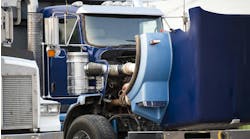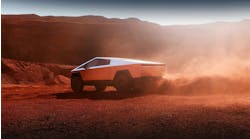Does spec'ing with resale value in mind benefit a fleet's bottom line, perpetuate a myth, or ease a truck OEM's ability to resell guaranteed trade-backs?
“Spec'ing for resell” is a concept that gained popularity in the 1990s as truck makers wrote leases with guaranteed residuals and accepted those tractors in trade.
Valuation matrices were created for key vehicle components, enabling truck manufacturers to get a handle on what the difference in future trade-in value would be if new trucks were spec'd with 16-liter engines, for example, rather than 11-liter models. Add in rebates or pricing concessions from the engine maker, and the decision to upgrade an engine spec became relatively simple.
The used-truck industry supported this practice because it improved the marketability of used tractors. No one would argue with the fact that it's much easier to sell the used tractor with the 16-liter engine than the one with the smaller engine.
What are these spec'd up components and options, and how much additional value do they really bring to the back-end of the deal?
At one time, items such as engine brakes or exhaust brakes, air-ride rear suspensions, air-ride cabs and sliding fifth wheels were seen as adding value to a vehicle beyond its base used value.
But that began to change as “spec'ing up” became more and more common. Now considered standard upgrades, items such as the ones listed above are incorporated into the base used value of the vehicle. In fact, it's likely that a vehicle's value may actually decrease if these kinds of components are not included.
To keep things relatively simple, let's divide spec'd-up components into three categories — those chosen for image, those chosen for functionality and those chosen because they're an emerging product — while acknowledging that there will be crossover.
Things that appeal primarily to image are dual painted air cleaners, dual stainless steel air cleaners, interiors, dual chrome exhaust and chrome accessory packages.
Items spec'd up for their functionality include engines, transmissions, sleeper size, wheel type and aerodynamic equipment.
And falling into the category of emerging systems are avoidance collision systems, auxiliary climate systems and automated transmissions.
Let's look at what the value of the spec'd up choices adds to a 2001 aerodynamic on-highway tractor with an average retail value of $50,500, as specified in the October Truck Blue Book market segment database.
In this example, the following components are included in the base value: a 12.7L-15.7L, 455-475-hp. engine, a 10-sp. transmission, a 70- to 80-in. high-rise sleeper, and 500,000 miles on the odometer.
The image items (premium level interior, dual chrome exhaust and chrome accessory package) add $4,750 to the base value, while spec'ing up to a 13-speed high-torque transmission, a 15.8L-16L 525-595 hp. engine, 10 aluminum disc wheels, and full chassis fairings adds $6,350.
On the surface, these numbers clearly suggest that there is value in spec'ing up for resale — $11,100 to be exact.
But I'm not so sure that the seller will actually realize an additional $11,100. First of all, I don't know what these additional components would cost new.
Second, spec'd up components do bring additional operational costs. All other things being equal, it's difficult to determine whether a 13-speed transmission will incur greater operational cost than a 10-speed. But it's reasonably safe to assume that the larger engine will not be as fuel efficient as the smaller one.
Ultimately, I think these spec'd up items all fall into the image category — the image of the truck, its driver and the fleet — with the understanding that certain operating conditions demand more expensive specs.
Some would say a positive image is priceless. But fleets have to stay in business, and the accountants will tell them — in black and white — whether or not the extra spec'ing really yields a payback.


